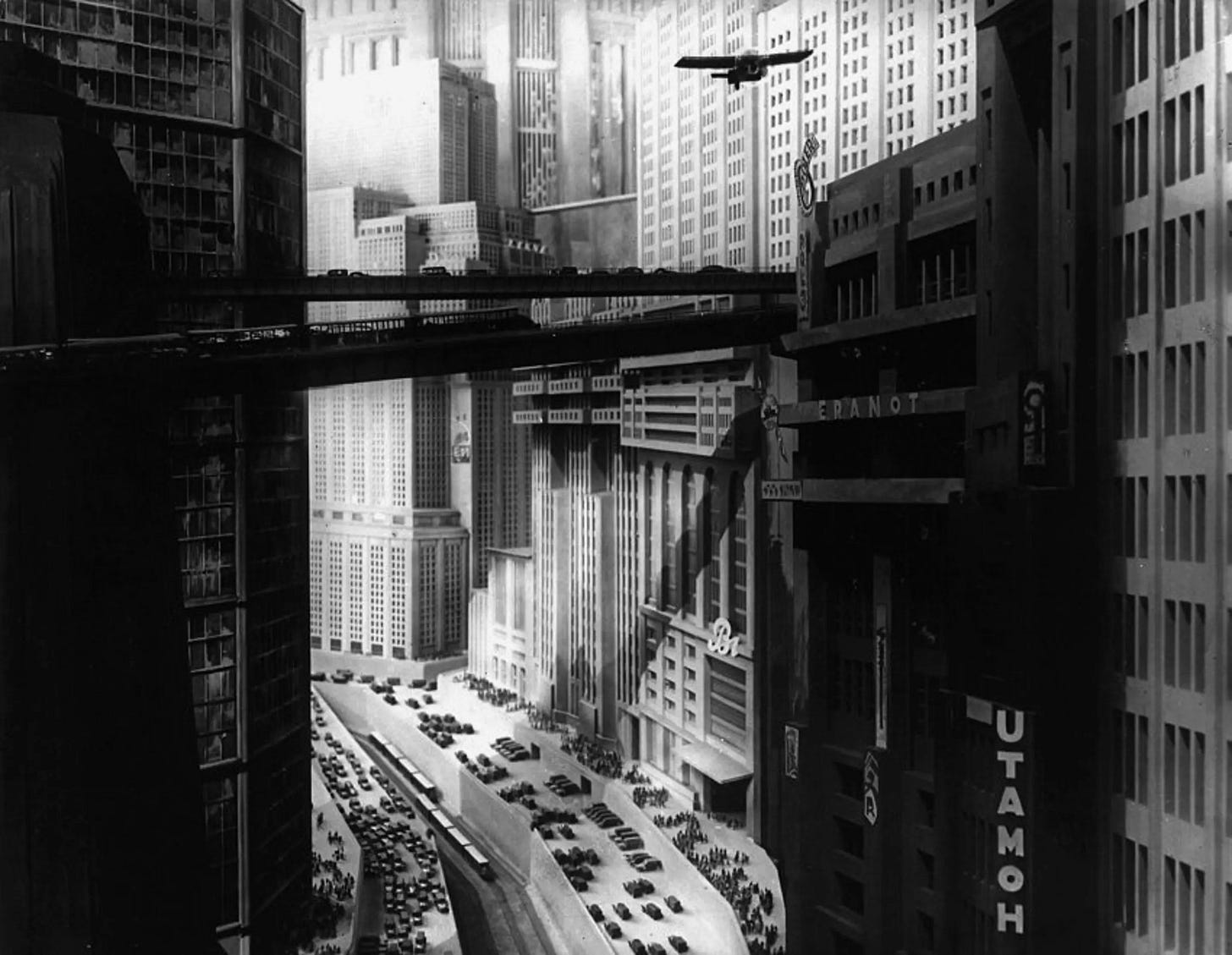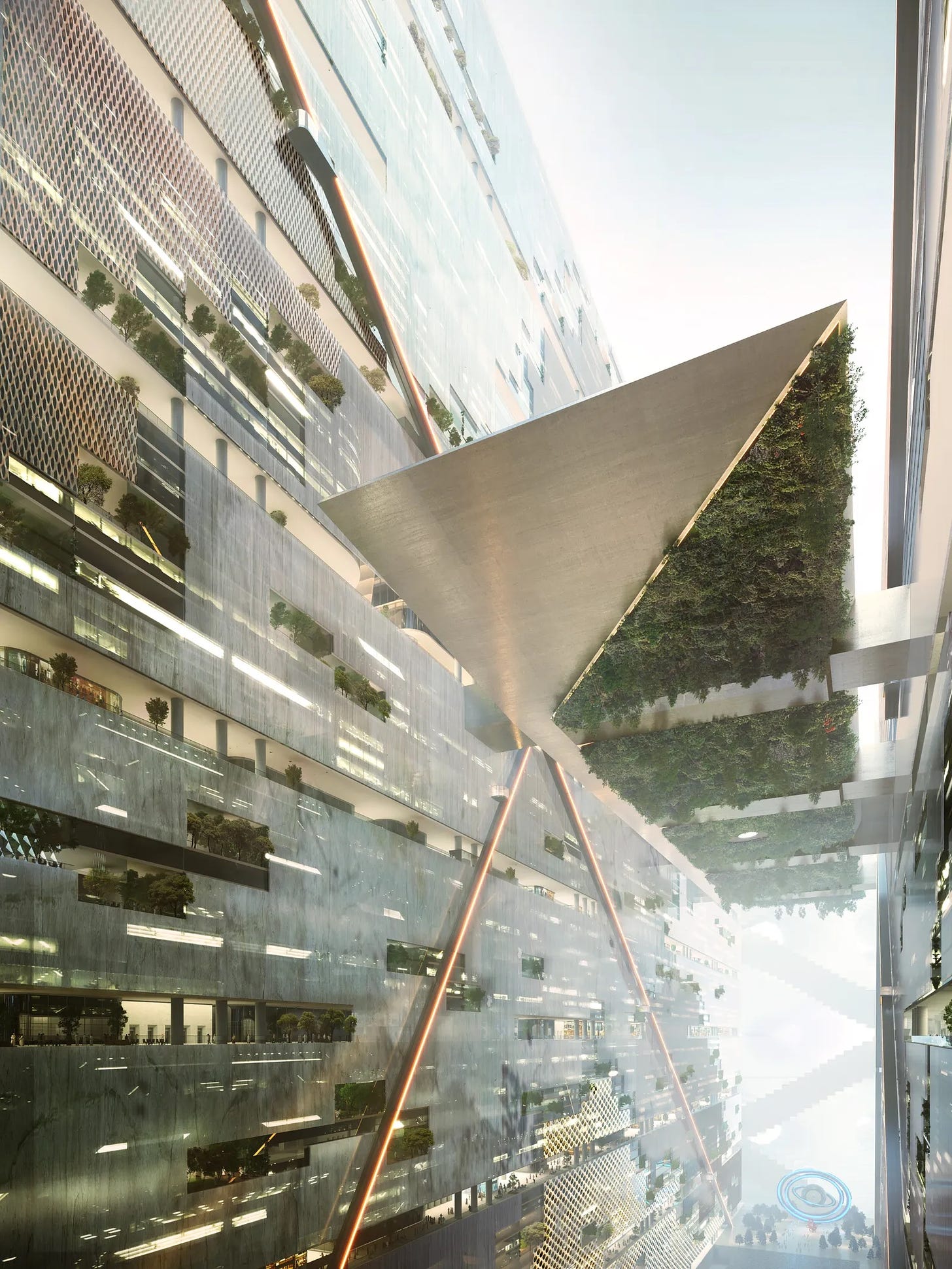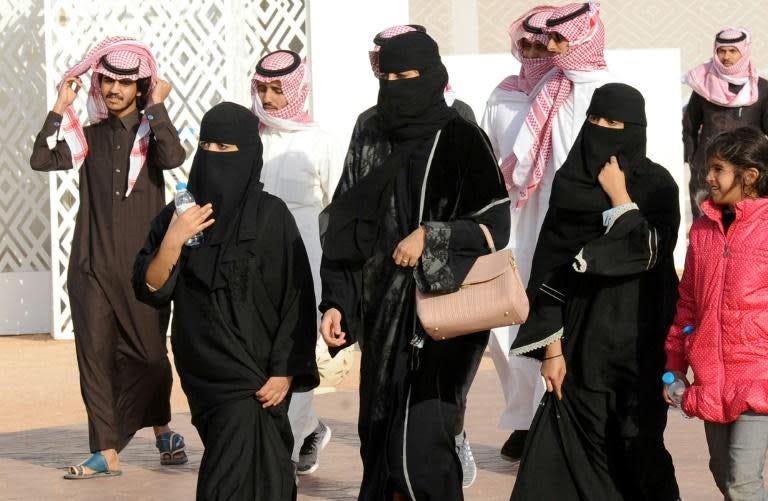Why Saudi Arabia's Line city could actually work
The future of urban living looks different from anything we imagined
Science fiction has been giving us glimpses of futuristic cities for a century, the pinnacle of which is arguably Fritz Lang’s film Metropolis. Shot in 1927, when famed sci-fi authors H.G. Wells and Isaac Asimov were at the height of their career, Metropolis was met with mediocre reviews.
But the German film set the tone for all depictions of urban life going forward. It featured a sprawling, Uber-futuristic vision of city life. There was no middle class in the film’s city. Instead, a cadre of ultra-rich elites lived comfortably in towering luxury buildings while hordes of poor toiled down below to keep everything running. The poor were not people in the eyes of the rich. They were simply tools, machines which kept their lives comfy.
The city of Metropolis itself was shiny and clean and beautiful. The rich lived in gorgeous condominiums with all the best technology to make life comfortable. Everything was concrete, steel and glass. There were no single-family homes.
This vision of future urban life is about to come real, hopefully without the socio-economic pitfalls of Metropolis, Blade Runner and Altered Carbon. Saudi Arabia’s Crown Prince HRH Mohammed bin Salman unveiled plans last year for a futuristic city called The Line. It will be a city 170 km (106 miles) long and 500 meters high, but only 200 meters (656 feet) wide. It’s footprint is only 34 square km. It will run entirely on renewable energy and its glass walls will reflect the desert sun and heat away from the people inside. Everyone will reside, work and play inside the comfy confines of The Line.
There’s a lot to unpack here. This is an ambitious project clearly inspired by science fiction, with a unique twist. The basic premise behind building the city in a straight, narrow line is it will eliminate urban sprawl. Cities currently take up hundreds of square miles in space, with polluted, concrete-covered centres, and roads and single-family dwellings taking up valuable natural land in concentric circles radiating out along the edges.
“We’re committed to a civilizational revolution that puts humans first on a radical change in urban planning.” HRH bin Salman said during the unveiling event. “The designs revealed today for the city’s vertically-layered communities will challenge the traditional flat, horizontal cities.”
The key is in the quote. The Line will consist of stacked buildings along the entire length of the city. People will live in apartments, work in offices, go to school in classes, and work out in gyms all stacked vertically on top of each other. There will be shops and restaurants along the ground level, and people will walk or zoom along the main strip on electric scooters. This main plaza will have trees, gardens and fountains.
The Line will also be a smart city. AI-powered drones will deliver groceries and medicine and clothing for people. There will be an underground high-speed electric rail system to shuttle people around quickly. Artificial intelligence will monitor the city and ensure temperatures remain constant, plants get watered, and life remains ideal for the inhabitants.
The entire city will be powered by renewable energy. Solar power would make the most sense for a city in the desert, although wind energy could also play a role.
Details about the finer parts of living were left out. What will happen with waste and sewage? Where will clean drinking water come from, and how will transportation networks from outside the city deliver goods and passengers to the Line?
These are probably minor details in the grand vision of the project, which has already secured $500 billion in funding from the Saudi Royal Family. It’s all part of Saudi Arabia’s 2030 project, which hopes to transform Saudi Arabia into a futuristic and environmentally sustainable society within a decade.
Many of these ideas are good and there’s no reason they can’t happen given today’s technology. After all, we as a species have the ability to completely power our lives with renewable energy. We just choose not to because it’s cheaper. We sacrifice our future living environment to save a few bucks today. Saudi Arabia is taking a different approach with The Line, and investing heavily in the future.
Governance is another issue many may have with The Line. After all, Saudi Arabia has one of the worst human rights records in the modern world, up there with North Korea and China. Women have very few individual rights and homosexuality is a crime punishable by death. Public beheadings are a thing in Saudi Arabia.
It’s hard to meld a vision of a futuristic utopian city with a culture that has barely left the medieval ages. The planners believe AI will manage most of the day to day operations of life in The Line, but will that include the infamous Islamic Religious Police, who patrol the streets of Saudi cities looking for women wearing lipstick under their burkas?
Then there’s the issue of class. Saudi labor is performed mostly by indentured servants from poor parts of the world, particularly Sri Lanka, Indonesia, Afghanistan and parts of Central Asia. Labourers receive a small sum of money by a Saudi employer, which they usually give to their poor family, and are then indentured to the employer for years. They get to shipped to Saudi Arabia and work on construction and oil projects in the desert heat. Most Saudi citizens refuse this kind of work and prefer to work in clerical positions, business, sales, academia or not all. It’s not far off from the elites and the peons of Metropolis.
The glamour of the idea is sullied if The Line is built by modern day slaves for the rich and elite to live comfortably.
How many could live in such a city? According to HRH bin Salman, The Line can accommodate 9 million people. Riyadh is Saudi Arabia’s largest city with 7.6 million inhabitants, but it sprawls across nearly 2000 square km. The Line is immediately a better system from an environmental perspective.
So although The Line is a great idea from a society that is not ready for it, what if the concept was exported to more socially advanced countries? The problem has to do with money, but also raw geography. It could never work in a place such as Norway, for example, because the mountains and fjords create major bottlenecks to any sort of large-scale line-like city plan. Likewise with Tokyo, stuck between a mountain range and the coast, and Vancouver, smushed up inside a small area of flatland in an otherwise mountainous region.
The Line could work in the US desert. Las Vegas, Phoenix, and Salt Lake City could potentially become Line-like cities, but these are places with very little political or social will to change. Much like with Saudi Arabia, conservative-minded regions are difficult to change from a social perspective.
These places will instead need to turn to different forms of urban planning. While there are many ideas out there, none of them are as advanced or thoroughly thought-out as The Line. Right now, Saudi Arabia will need to lead the way forward for the rest of the world, despite its extreme social conservatism.
And it is. Construction began on The Line in late 2021, and the government expects phase one to be complete by 2024.







